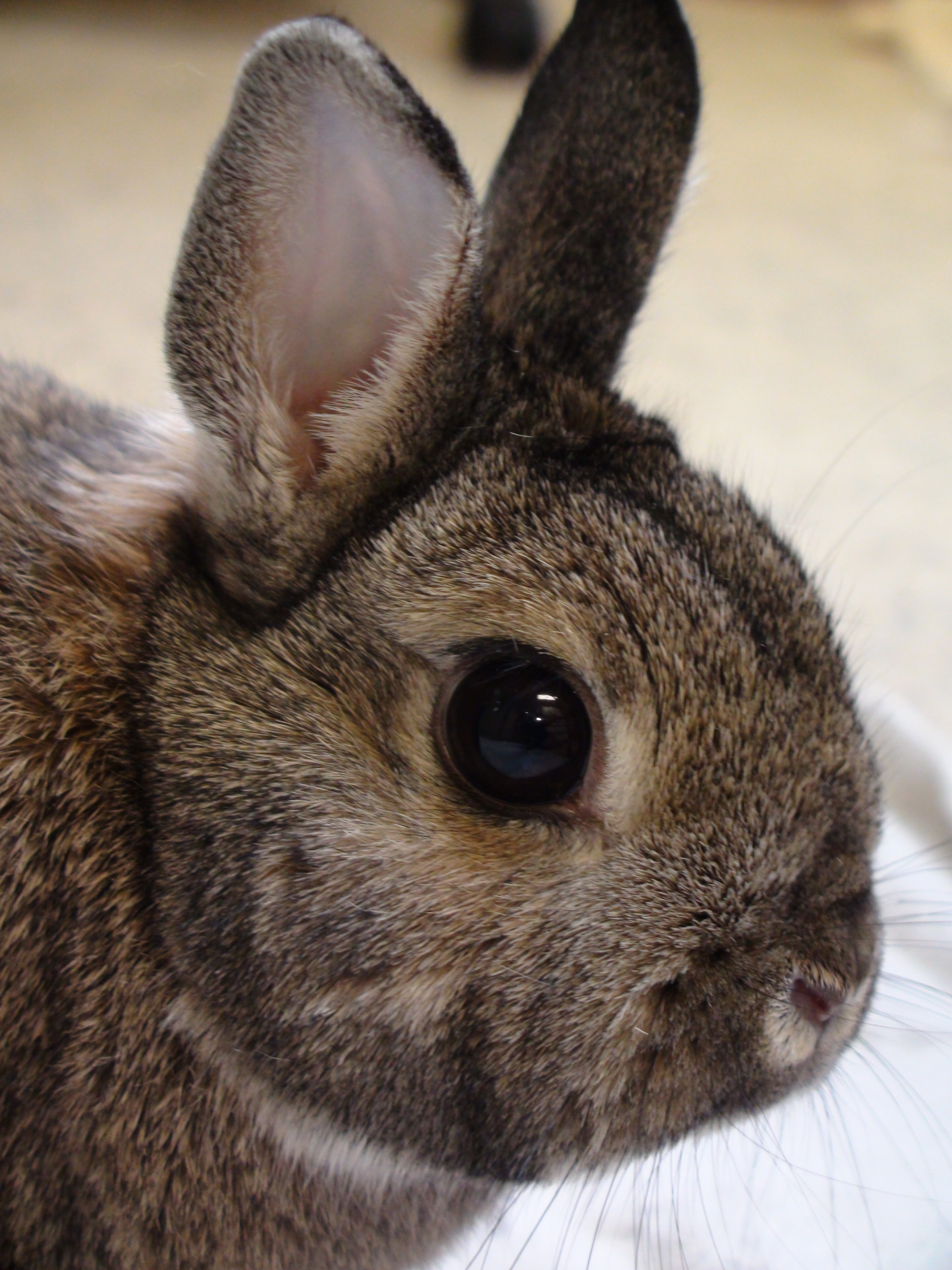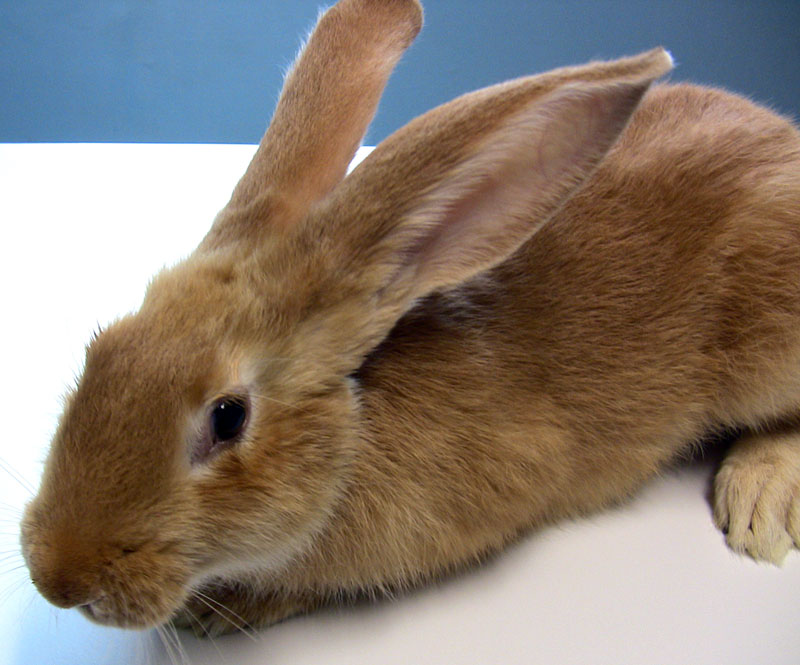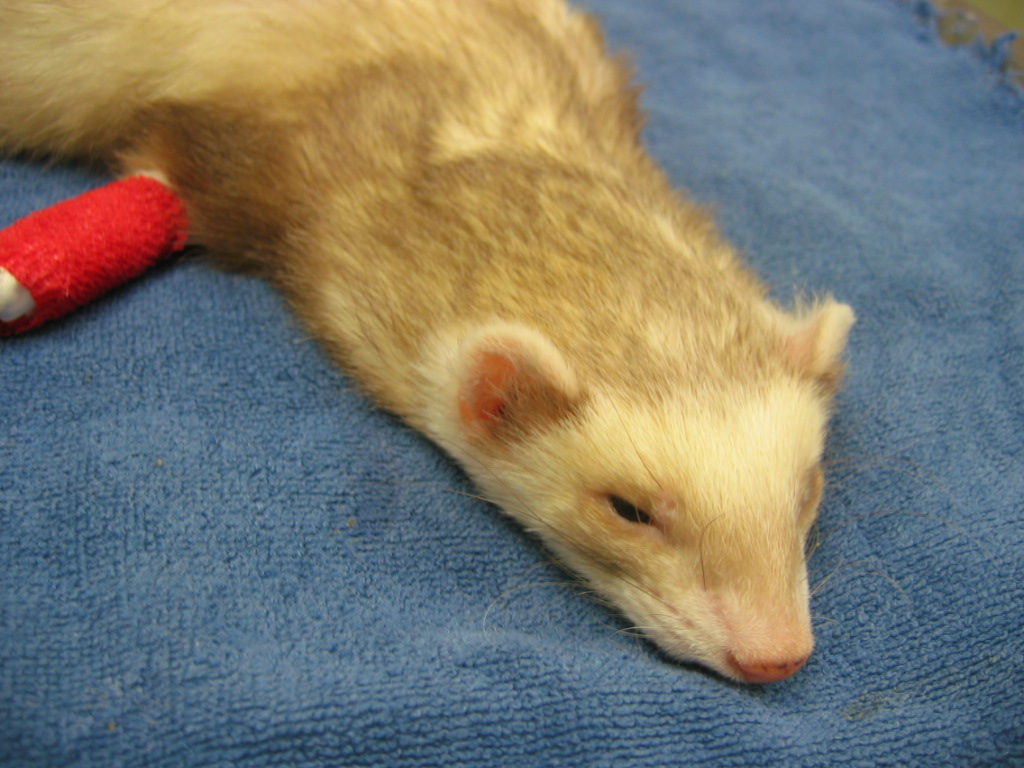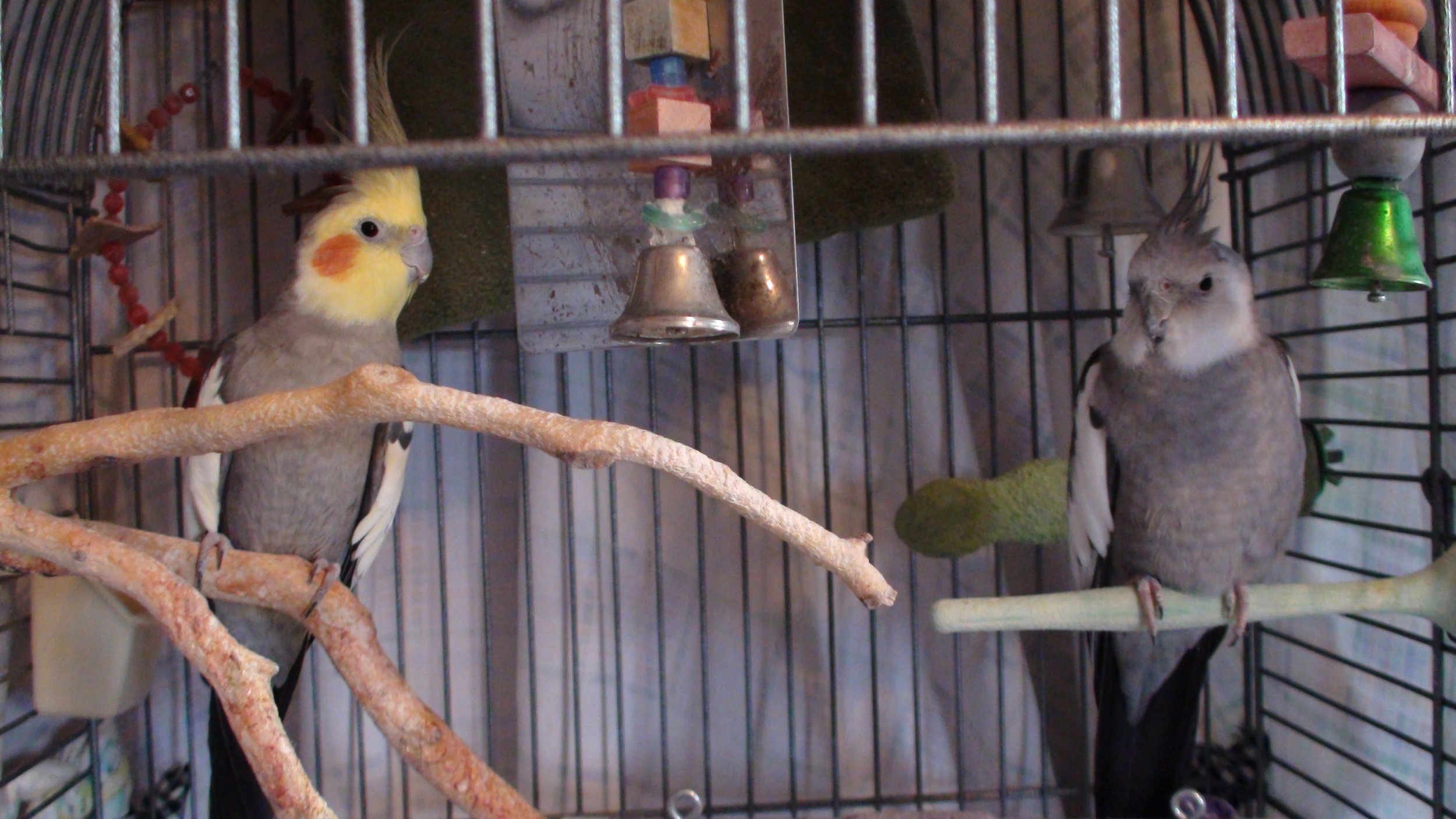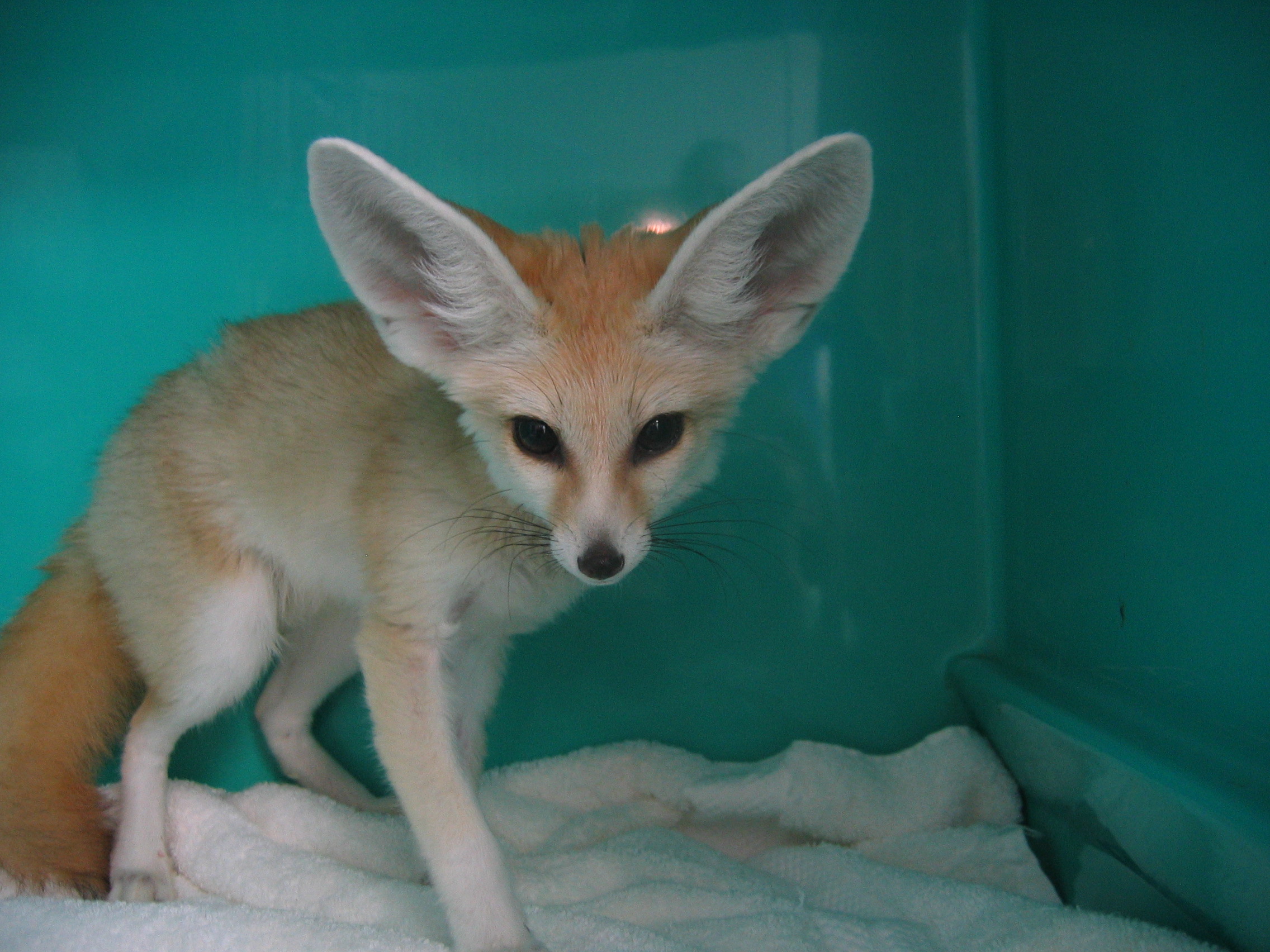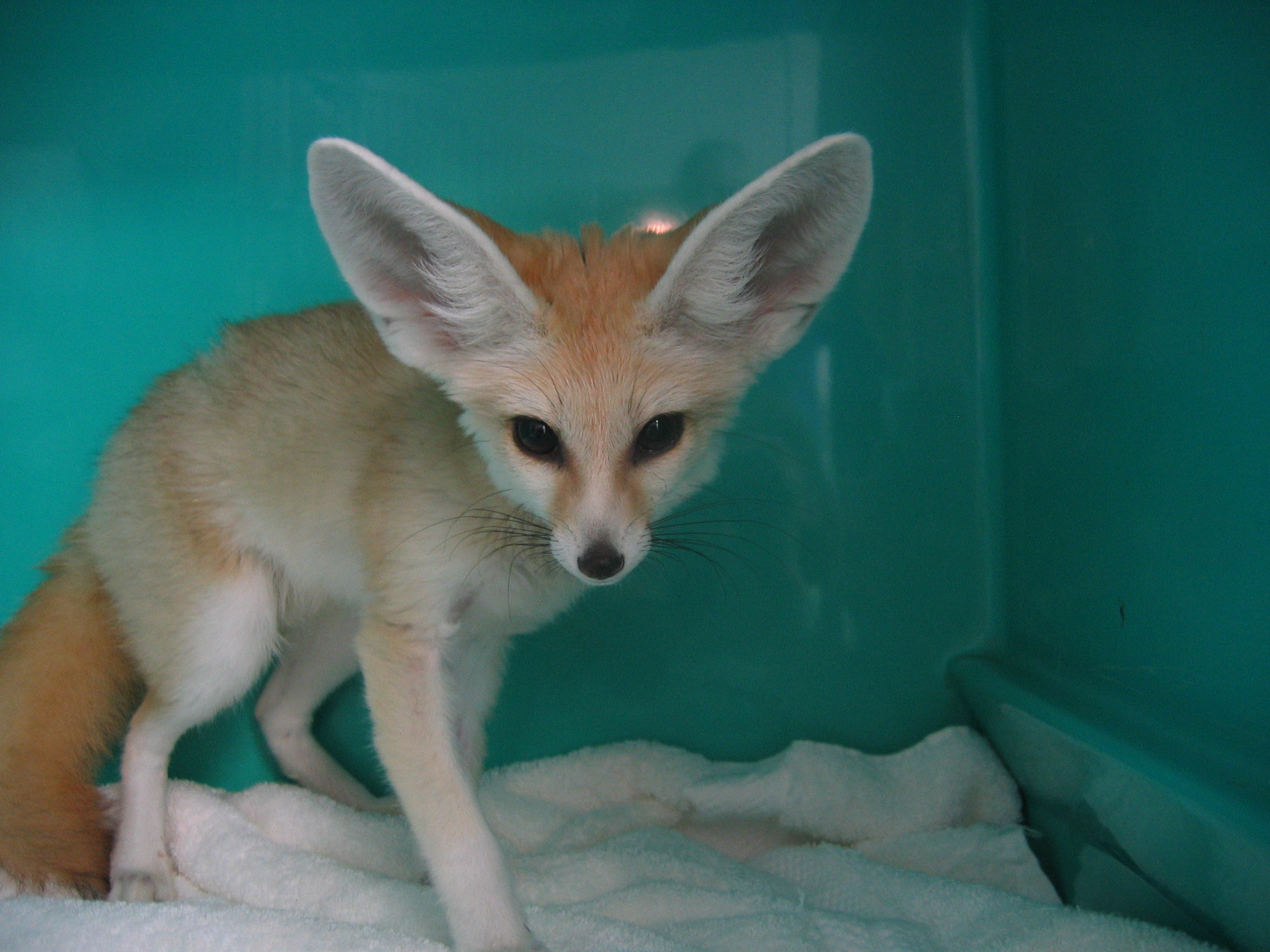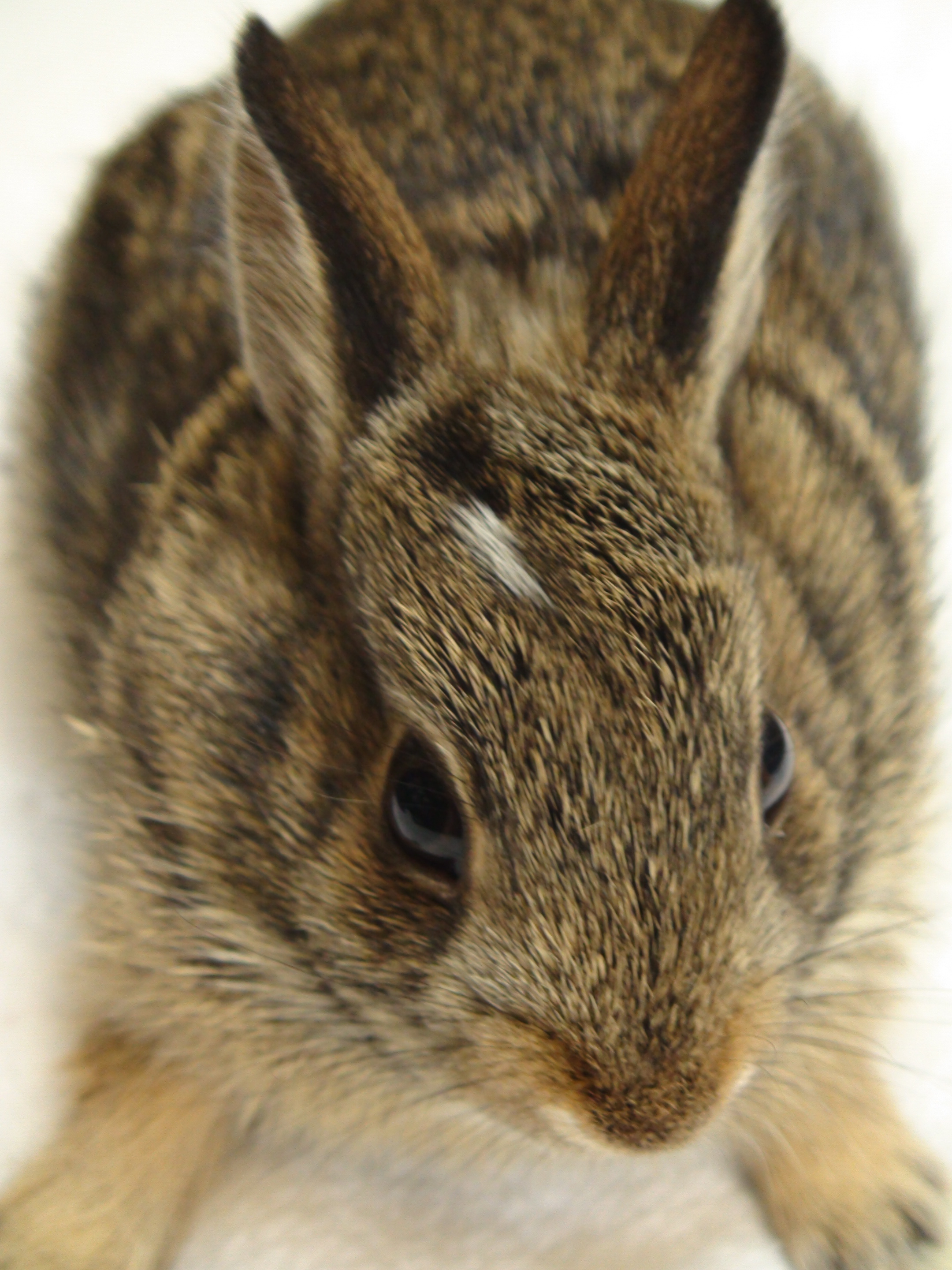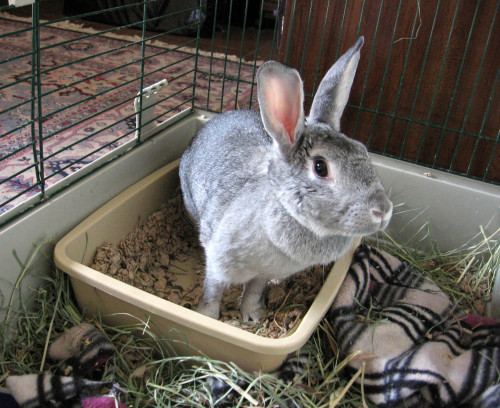It’s easy to understand why pet owners regularly spay pet dogs and cats. But why spay the pet rabbit, especially if she is a single pet? The reason is preventative health care: the incidence of uterine cancer in unspayed female rabbits is up to 75% in certain breeds. Uterine cancer is usually silent until well advanced. This cancer typically spreads to other body organs, especially to the chest cavity. Signs can include uterine bleeding, lethargy, and difficulty breathing. Early spaying is the key to prevention, and costs much less than trying to treat the sick rabbit later. Prevention is simple: spay your pet rabbit as early as 8-10 weeks of life. Older pets benefit from spaying as well. Our clients also find the spayed female rabbit is calmer, uses the litter box better, and is in general a much better pet. So why spay the pet female guinea pig? Most guinea pigs eventually develop ovarian cysts. These cysts are often benign and cause no apparent harm or distress. However, in a certain percentage of pets, cysts become very large and cause discomfort. Guinea pigs with large painful cysts are often less active, eat less, and lose weight. Pet guinea pigs can be spayed (removal of the entire uterus and ovaries), or in younger animals can have ovariectomy (removal of the ovaries alone), which is a simpler, quicker procedure with an improved recovery time. Questions about spaying your pet rabbit or guinea pig? We would be happy to help. Call the clinic at 317-879-8633.
WATCH OUT! THEY’RE EVERYWHERE!!!
 "The Invasion of the Orphaned Baby Birds: Coming Soon to a Backyard Near You!"
"The Invasion of the Orphaned Baby Birds: Coming Soon to a Backyard Near You!"
Spring is here a bit early this year, and the first of the baby birds have already appeared in our clinic! Every year, we hear of hundreds of young birds found and rescued outside. While some of them really are in distress and need help, most are not. Babies can be divided into “nestlings” (still in the nest, downy feathers, not able to fly or walk well) and “fledglings” (all adult feathers, look like miniature adults, walking well, but just learning to fly). Here is a quick guide to help determine when to get involved: 1. Nestlings that have fallen from the nest, but seem healthy otherwise. These may have fallen out accidentally, been blown out, or rarely, tossed out by parents. Quickly try to locate the nest, which will be nearby, and place the bird gently back into the nest. Parents will not reject young that have been touched by humans-that’s a myth! If the bird is found out of the nest multiple times, then it’s time to rescue. Note: if the nest has been blown out, you can attempt to nail a board with a shallow container to a tree branch and replace the nest in it as best as you can. The parents only need it for a short while until the baby birds fledge 2. Nestlings that have fallen from the nest, but seem weak or appear to be injured. These should be rescued. 3. Fledglings found hopping about in the yard, and appear healthy but can’t quite fly away. These are “teenager” birds that are out on their own, learning how to fly. The parents are nearby watching, and will help the young the best they can. Leave these birds alone. Interfering will not help the bird learn. 4. Fledglings that appear injured. These should probably be rescued. So how do you rescue the baby birds that really need help? Do not try to raise the birds yourself, as it’s tricky, and actually against federal laws that protect our songbirds. All injured or orphaned birds should be taken to one of our local licensed wildlife rehabilitators or dropped off at our clinic during regular business hours. See the “Wildlife” link on this website for more details.
Easter Bunnies
Easter means a lot of things to our friends, but to the members of the House Rabbit Society, the time period just after Easter marks the annual rise in the numbers of pet rabbits relinquished to rescue. The reason is an increase in impulse buying of “Easter Bunnies” by families who aren’t prepared to care for an adult rabbit.
.
Our clinic and the House Rabbit Society think rabbits are excellent pets, but all owners should research the ins and outs of caring for a pet that may live 7-8 years or even longer. If you are thinking about a pet rabbit, and have questions, please give us a call, Avian and Exotic Animal Clinic: 317-879-8633, or contact a member of the Indiana House Rabbit Society at indianahrs.org We will be glad to guide you through the process, and help welcome your healthy and happy pet rabbit!
.
Avian and Exotic Heros: our Blood Donors
Just like in humans, our exotic patients sometimes require a blood transfusion. Unlike humans, dogs and cats, blood banks do not store blood for pets such as birds, rabbits, ferrets, guinea pigs and rodents. For these special patients, we keep a list of exotic “heros” whose owners are willing to bring them to the clinic on a moment’s notice to donate life saving blood. Donating blood is minimally risky to the donor, and often the difference between life and death for the recipient.The Avian and Exotic Animal Clinic would like to thank our exotic heros!
Exotic Animals and the Law: What are Indiana’s laws?
Each state regulates pet ownership of exotic animals. Indiana’s laws are relatively lenient, considering some states even ban ownership of pets such as the ferret. Indiana has no laws regulating ownership of common exotic animals, such as pet birds, domestic rabbits, guinea pigs, ferrets, and rodents. Current laws require permits for venomous snakes, exotic felines, and wildlife: Summary of Law: All persons who possess certain wild animals must obtain a permit for each animal they possess. A wild animal possession permit is required for Class I animals (eastern cottontail rabbit, gray squirrel, fox squirrel, southern flying squirrel) Class II animals (beaver, coyote, gray fox, red fox, mink, muskrat, opossum, raccoon, skunk, weasel) and Class III animals: wolves (purebred), bears, wild cats (excluding feral cats), venomous reptiles and crocodilians (at least 5 feet long).
In order to comply with Indiana law, owners who would like to bring any of these regulated animals for veterinary care can do so, with the proper up-to-date permit in hand. (One exception: our clinic will not see venomous reptiles). It should be kept in mind that not every animal in the above list makes a good pet. If you are considering an unusual animal as a pet, please give us a call beforehand. We would be happy to share what we’ve learned from our clients over the years.
Hi ho, it’s off to conferences we go!
How do veterinarians improve skills and learn the newest and latest on pet care after graduating from school? By accumulating CE, or continuing education hours. Most states require veterinarians to obtain a certain amount of CE. In Indiana, veterinarians are required to obtain 40 hours every two years.How do exotic veterinarians find CE about our special species? Fortunately, there are now many conferences with lectures on medicine and surgery of birds, reptile, rabbits, ferrets, rodents and much, much more. The largest veterinary conference in the US is the North American Veterinary Conference, in Orlando every January. This conference hosted 6000 veterinarians this year, and provided exotic animal lectures all day for the entire 5-day conference. If you are interested, the entire scientific program can be viewed at: www.navc.com/session. More info on our doctors’ CE schedules can be found under the “news” link.
We want your pet on our Facebook page!
We’re beginning a collection of pictures of our favorite rabbits, ferrets, birds, reptiles, guinea pigs, rats and other friends on our Facebook page. Please send us yours! If you have a favorite image of one of our patients, please send it to us at exoticvetclinic@gmail.com. Don’t forget your pet’s name and a little caption to go with it.
Thus ends the Year of the Rabbit
Who are all these visitors?
Merry Christmas and a Happy New Year from the staff of the Avian and Exotic Animal Clinic!
We wish you and your exotic creatures health and happiness in the coming year.
Happy Halloween from the staff at AEAC!
It’s Great to Sedate!
What’s the buzz about sedation? Sedation is a terrific alternative to general anesthesia for procedures that aren’t safe to do in some wide awake patients. Examples include radiographs, sample collection and minor wound care. Some pets struggle and experience stress when restrained for procedures. General anesthesia has been used occasionally for this purpose; however, sedation may be a much better alternative. What’s the difference between sedation and general anesthesia?
With general anesthesia, a combination of drugs is used at high enough levels to produce complete unconsciousness. This is absolutely required for a potentially painful surgical procedure. The types of drugs and dosages used to produce complete unconsciousness have more potential side effects than drugs used for sedation. An animal under general anesthesia must be monitored by an experienced veterinary anesthetist continuously until recovery.
With sedation, the pet is not completely asleep, and drugs used for sedation are generally safer. Typically, sedation provides relaxation, any reduction of anxiety and any discomfort. Also, much lower dosages can be used. A sedated animal does not require the same kind of continuous monitoring.
How is the Avian and Exotic Animal Clinic using sedation for exotic pets? General anesthesia is still needed for surgeries such as spays, neuters and other more extensive surgeries, but for simply taking radiographs or other minor procedures, it’s just not necessary.
Our clinic has been using sedation in birds and exotic animals for several years, and we’re convinced it is a safe and effective alternative. In some very special cases, we have offered sedation for pet birds that experience extreme stress during handling for routine physical examination and grooming, and we are very pleased with the results. For more information, see Dr. Lennox’s lecture notes from the Conference of the Association of Avian Veterinarians.
Contact us if you have any questions on why we say: “It’s Great to Sedate!”
Thinking about getting a new pet?
There are several things to consider before taking a new animal into your home. Each species has very specific requirements and some may not get along well in the same house. Check out our care handouts on each species for more information. We also recommend asking someone who has owned one before! Keep in mind what kind of cage and dietary requirements, common medical conditions, as well as average life spans. Some species, like large parrots and tortoises can outlive their owners! We always recommend checking out rescues before purchasing animals from pet stores. Most are full of wonderful, perfectly adoptable pets just looking for a second chance. Many are already spayed or neutered and have received yearly exams as well! Here’s a list of some of great, local exotic pet rescues:
EARPS: (rabbits, guinea pigs, rats, mice): http://www.earps.org/EARPS,_Inc/Home.html
House Rabbit Society: (rabbits): http://www.indianahrs.org/
Healthi Pet Network: (parrots): http://healthipet.webs.com/
Critter’s Chance: (rabbits, ferrets, farm animals) http://www.acritterschance.com/
Five Point’s Ferret Refuge: (ferrets) http://fivepointsferretrefuge.webs.com/
(All pets pictured on this page are currently available for adoption through EARPs.)
AEAC Welcomes Dr. Bricker!
The Avian and Exotic Animal Clinic is pleased to welcome Dr. Nelson Bricker to our staff. Nelson graduated from Purdue University in May and is completing a one-year shared internship with us and the Circle City Veterinary Specialty and Emergency Hospital. While a student, Dr. Bricker spent time here developing an already active interest in exotic animals, in particular reptiles and amphibians. You can read more information about Dr. Bricker on our staff page.
It's Finally Summer!
With the warm weather comes both opportunity and caution for our exotic pets. For bird and reptile owners, we can take advantage of the benefits of natural exposure to UV light. Consider some time outdoors with access to direct sunlight (not filtered through glass or plastic). Studies show benefits can be gained from just a few hours of exposure. Use caution to prevent overheating by providing an area with shade, and provide plenty of fresh water. Other dangers come from predators, for example dogs, cats and even hawks. All enclosures should be secure on all sides. Exotic mammals may enjoy a supervised trip outdoors, but be cautious with those pets not naturally acclimated to warm weather, for example guinea pigs and chinchillas. All mammals should adjust to the warm weather by gradually increasing the amount of time outdoors. Watch for signs of overheating, including increased respiratory rate and panting.
A Happy, Healthy, and Prosperous New Year
Start the new year right with a wellness check up for your special exotic friend. Wellness checks include a complete physical examination, measurement of weight, grooming and review of diet and behavior. We will share any new insights into exotic pet medicine we've learned over the last year.
Dr. Lennox teaches in Tokyo
Japan 2010. We traveled to Japan to teach lectures and laboratories in exotic companion medicine. The highlight was a wet lab where participants learned techniques in rabbit and rodent dentistry. We spent our free time negotiating the Tokyo subway and trying out some interesting food. We also learned the Handbook of Rabbit and Rodent Dentistry will be translated into Japanese.







